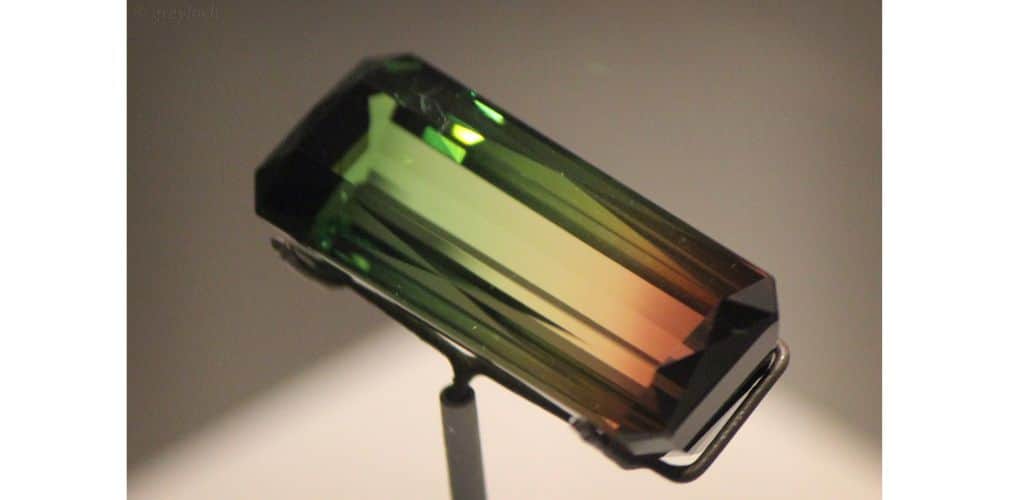The Federal Circuit has affirmed a lower court’s decision finding the claims of a patent for preventing gemstone counterfeiting invalid.
The case is Rady v. The Boston Consulting Group.
Rady owns US Patent No. 10,469,250, directed to “a framework [for] record[ing] to a blockchain” the “unique identification[s] (signatures) of physical items which have unique, random properties.”
As the court describes it,
The claimed invention involves scanning a physical item, such as a gemstone, determining its unique pattern of imperfections, i.e., the item’s “signature,” and then recording that signature to a blockchain if the physical object has not previously been registered. … The patent purports to solve problems related to asset provenance and asset and supply chain management.
In 2020, Raby sued The Boston Consulting Group (BCG) and De Beers, the diamond company, for alleged infringement of his patent.
BCG filed a motion to dismiss, asserting that “the claims of the ’250 patent are directed to the patent-ineligible abstract idea of collecting, processing, and storing data to track physical items” and they “do not improve anything about computer technology itself.”
The district court granted BCG’s motion, stating that while Rady’s claimed system “record[s] a fingerprint for a gemstone” to a blockchain, the patent does “not improv[e] the functionality of storing and processing data on a blockchain.”
Also, said the district court, “a blockchain is merely a ledger maintained and verified through a peer-to-peer network, and [Rady] d[id] not describe how the patent improves blockchains.”
According to the district court, “tracking physical objects do[es] not make [the] claims any less abstract.”
The Federal Circuit noted that patent protection isn’t available for “[l]aws of nature, natural phenomena, and abstract ideas.”
The Federal Circuit agreed with the district court that the claims of the patent are directed to an abstract idea. Claim 1 of the patent requires identifying a physical item’s unique pattern of physical imperfections, or “signature,” and then recording that information to a blockchain. However, said the court, “claims directed to gathering and storing data, without more, are impermissibly abstract.”
Also, said the court, “identifying items by their unique physical features is a long-standing and well-established practice.”
The patent specifications recognize that
it has been long understood that many physical objects have unique “small-scale imperfections.” … Diamonds, for example, have “carbon imperfections/carbon flaws” that “are unique in 3D space in the diamond’s shape and type.” … Indeed, Rady’s specification incorporates by reference a jewelry website that explains that diamonds can be identified by their unique imperfections.
Rady’s patent doesn’t include any new measurement techniques or devices to identify such imperfections. Instead, it relies upon existing devices.
Also, the claimed invention “relies on the conventional use of existing blockchain technology” and the patent doesn’t “disclose any new type of blockchain or any improvement in blockchain functionality.”
On appeal, Rady asserted that “counterfeiting is a widespread economic problem that results in billions of dollars in lost revenue each year.”
However, said the court, “Rady’s claimed system may be useful in preventing the counterfeiting of gemstones, but utility is not the measure of patent eligibility.”
The court concluded:
Rady’s claims are directed to an abstract idea because they do not purport to solve any technological problem, but instead use existing imaging and blockchain technology in predictable ways to address the economic problem of counterfeit goods. In effect, Rady’s claims rely on existing technological tools to gather and record data but disclose no purported improvement in the tools themselves.
The court also concluded that
Rady’s claims fail to recite any elements that, either individually or as an ordered combination, transform the abstract idea of gathering and storing data about the unique imperfections of a physical object into a patent-eligible application of that idea.
Takeaway:
Courts have previously held that
An abstract idea does not become nonabstract by limiting the invention to a particular field of use or technological environment, such as the Internet [or] a computer.”
Similarly, an abstract idea doesn’t become nonabstract just because it uses the blockchain.
Just like the haiku above, we like to keep our posts short and sweet. Hopefully, you found this bite-sized information helpful. If you would like more information, please do not hesitate to contact us here.


